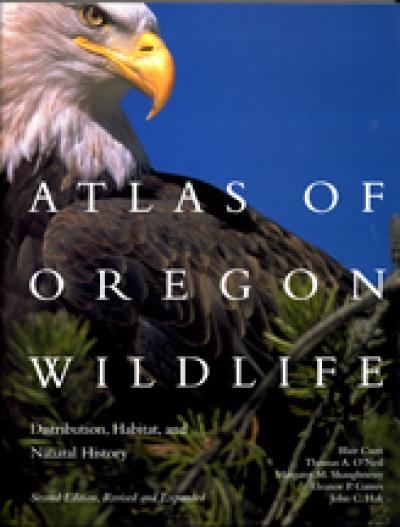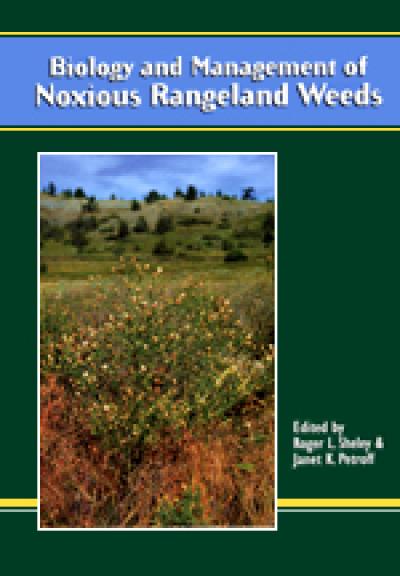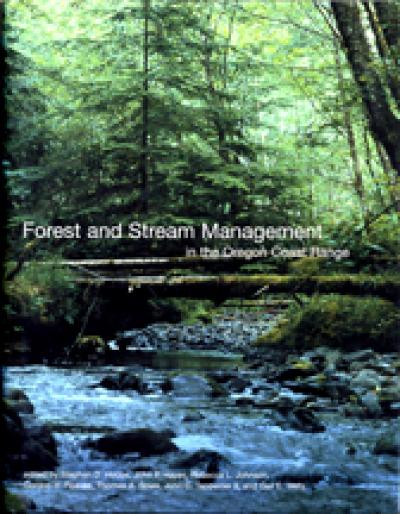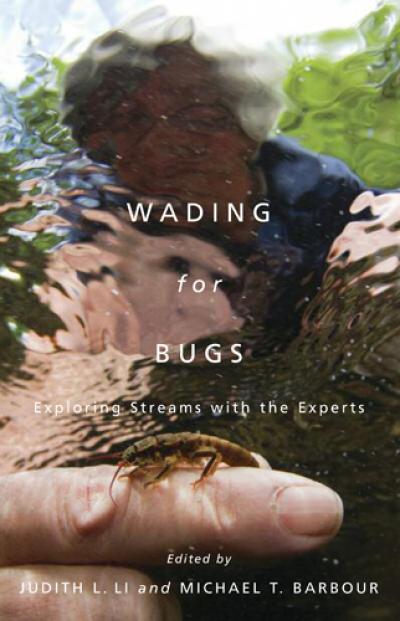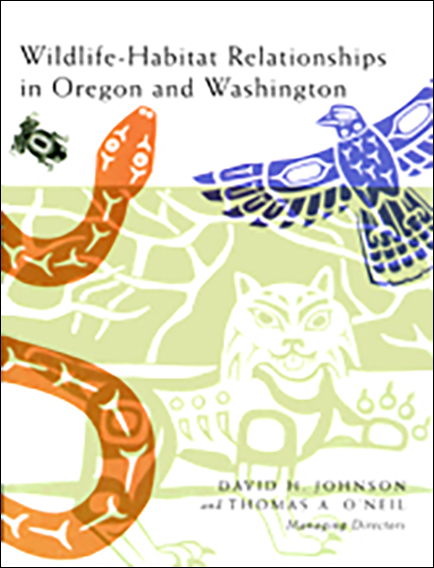
Wildlife-Habitat Relationships in Oregon and Washington
Thomas A. O'Neil and David H. Johnson
The biggest challenge facing natural resource conservation efforts today is to maintain biological diversity and viable ecosystems. This requires the best available scientific information on the relationships between individual species and their habitat.
Wildlife-Habitat Relationships in Oregon and Washington is the first book to compile and synthesize in a single convenient, comprehensive volume a vast amount of diverse information on 593 wildlife species and their relationships with the 32 terrestrial, freshwater, and marine habitat types of Oregon and Washington.
Included are color photographs of each habitat type, as well as hundreds of maps, diagrams, and other illustrations. In addition, a separate CD-ROM (included with the book) contains additional wildlife diata and color maps, and seven matrices that link wildlife species with their respective habitat types.
The 88 contributing authors include experts in wildlife, botany, fisheries, conservation biology, vegetation mapping, and the ecology of forest, rangeland, and marine environments, among other fields.
Intended for use by natural resource managers and planners, scientists, conservationists, educators, and other individuals with a deep interest in wildlife species and their habitats, this book is sure to be a valuable resource and standard reference for many years to come.
About the author
Tom O'Neil is director of the Northwest Habitat Institute and has worked as a wildlife ecologist and biologist for a number of organizations and agencies, including the U.S. Forest Service and the Oregon Department of Fish & Wildlife. He has written more than 40 publications and is co-author of the Atlas of Oregon Wildlife (OSU Press).
Read more about this author
David Johnson has held forestry, wildlife, biologist, and habitat scientist positions with a number of natural resource agencies, including the U.S. Fish & Wildlife Service, Oregon Department of Fish & Wildlife, and Washington Department of Fish & Wildlife. He is the the author of 25 publications on conservation and management of wildlife species.
Read more about this author
Maps of Oregon and Washington Wildlife-Habitat Types
Managing Director's Preface
Forward
Introduction
- Oregon and Washington Wildlife Species and Their Habitats
T.A. O'Neil and D.H. Johnson - Wildlife Habitats: Descriptions, Status, Trends, and System Dynamics
C.B. Chappell, R.C. Crawford, C. Barrett, J. Kagan, D.H. Johnson, M. O'Mealy, G.A.Green, H.L. Ferguson, W.D. Edge, E.L. Greda, and T.A. O'Neil - Structural Conditions and Habitat Elements of Oregon and Washington
T.A. O'Neil, K.A. Bettinger, M. Vander Heyden, B.G. Marcot, C. Barrett, T.K. Mellen, W.M. Vander Haegen, D.H. Johnson, P.J. Doran, L. Wunder, and K.M. Boula - Management of Within-stand Forest Habitat Features
W.C. McComb - Conservation of Biodiversity: Considerations and Methods for Identifying and Prioritizing Areas and Habitats
M.M. Shaughnessy and T.A. O'Neil - Key Ecological Functions of Wildlife Species
B.G. Marcot and M. Vander Heyden - Wildlife and Westside and High Montane Forest
D.H. Olson, J.C. Hagar, A.B. Carey, J.H. Cissel, and F.J. Swanson - Wildlife of Eastside (Interior) Forests and Woodlands
R. Sallabanks, B.G. Marcot, R.A. Riggs, C.A. Nehl, and E.B. Arnett - Wildlife Alpine and Subalpine Habitats
K.M. Martin - Wildlife of Westside Grassland and Chaparral Habitats
B.Altman, M. Hayes, S. Janes, and R. Forbes - Wildlife of Eastside Shrubland and Grassland Habitats
W.M. Vander Haegen, S.M. McCorquodale, C.R. Peterson, G.A. Green, and E. Yensen - Wildlife of Urban Habitats
H.L. Ferguson, K. Robinette, and K. Stenberg - Wildlife of Agriculture, Pastures, and Mixed Environs
W.D. Edge - Wildlife of Riparian Habitats
J.B. Kauffman, M. Mahrt, L. Mahrt, and W.D. Edge - Wildlife of Coastal and Marine Habitats
J.B. Buchanan, D.H. Johnson, E.L. Greda, G.A. Green, T.R. Wahl, and S.J. Jeffries - Introduced Wildlife of Oregon and Washington
G.W. Witmer and J.C. Lewis - Genetic Considerations for Introduced and Augmented Populations
S.M. Haig and R.S. Wagner - Extirpated Species of Oregon and Washington
C. Iten, T.A. O'Neil, K.A. Bettinger, and D.H. Johnson - Characterizing Species at Risk
J.F. Lehmkuhl, B.G. Marcot, and T. Quinn - Terrestrial and Marine Management Activities: Links to Habitat Elements and Ecological Processes
M. Vander Heyden and B.G. Marcot - An Overview of Models and Their role in Wildlife Management
G.J. Roloff, G.F. Wilhere, T.Quinn, and S. Kohlmann - Five Case Studies of Wildlife Modeling Applications
T. Quinn and D.H. Johnson, editors
Case Study 1: A Spatially Realistic Population Model for Informing Forest Management Decisions
G.F. Wilhere, N.H. Schumaker, and S.P. Horton
Case Study 2: A Model to Assess Potential Vertebrate Habitat at Landscape Scales: HABSCAPES
M.Huff, T.K. Mellen, and R. Hagetedt
Case Study 3: Cross-scale Classification Trees for Assessing Risks of Forest Practices to Headwater Stream Amphibians
G.D. Sutherland and F.L. Bunnell
Case Study 4: Applying GAP Analysis to County and Regional Land Use Planning
M.R. Stevenson
Case Study 5: A Model to Determine Potential Northern Spotted Owl Nesting Areas
N.W. Darby and T. Young - Integrating Wildlife Species Habitat Goals and Quantitative Land Management Planning Processes
P. Bettinger, K. Boston, J. Sessions, and W.C. McComb - Decaying Wood in Pacific Northwest Forests: Concepts and Tools for Habitat Management
C.L. Rose, B.G. Marcot, T.K. Mellen, J.L. Ohmann, K.L. Waddell, D.L. Lindley, and B. Schreiber - Single Species, Multiple Species, or Ecosystem Management: A Perspective on Approaches to Wildlife Conservation
H.Salwasser - Pacific Salmon and Wildlife: Ecological Contexts, Relationships, and Implications for Management
C.J. Cedeholm, D.J. Johnson, R.E. Bilby, L.G. Dominguez, A.M. Garrett, W.H. Graeber, E.L. Greda, M.D. Kunze, B.G. Marcot. J.F. Palmisano, R.W. Plotnikoff, W.G. Pearcy, C.A. Simenstad, and P.C. Trotter - An Introduction to Wildlife-Habitat Relationships CD-ROM
M. Trevithick, T.A. O'Neil, and C. Barrett
Appendix: Scientific and common names for 743 wildlife species found in Oregon and Washington
Glossary of Terms
Acknowledgements
Index
CD-ROM: Matrixes for Wildlife-Habitat Relationships in Oregon and Washington
T.A. O'Neil, D.H, Johnson, C. Barrett, M. Trevithick, K.A. Bettinger, C. Kiilsgaard, M. Vander Hayden, E.L. Greda, D. Stinson, B.G. Marcot, P.J. Doran, S. Tank, and L. Wunder
Effectively managing our natural resources requires the combination of high=quality science and the availability of data-rich information. A key information need for natural resource managers, scientists, and educators is the current state of knowledge of wildlife species and their habitats. In this book, we use the term "wildlife" to refer to terrestrial vertebrates or amphibians, birds, mammals, marine mammals, and reptiles. While we support the more encompassing description of wildlife to include fishes and invertebrates, by necessity we had to narrow the focus in this book.
Wildlife habitat is a concept related to a particular wildlife species.9 More specifically, habitat is an area with the combination of the necessary resources (e.g., food, cover, water) and environmental conditions (temperature, precipitation, presence or absence of predators and competitors) that promotes occupancy by individuals of given species (or population), and allows those individuals to survive and reproduce.5 The arrangement of these habitat resources and features to meet the biological needs of a species identifies the habitat niche a species occupies, and from a systems perspective, provides a framework for the ecological role or function that an individual species plays within the environment.6 From a manager's perspective, the habitat concept needs to be tangible and scientifically supported, inasmuch as habitat features need to be plainly defined, and the wildlife species associations with them made clear. Addressing this management perspective is the primary focus of this book.
Understanding species and their habitat relationships is paramount to predicting species' responses to past, present, and future land uses within a managed landscape. In the past, one approach to habitat management could be considered similar to the motto in the movie Field of Dreams: "Build or protect it (habitat) and they (species) will come." But in order to build it or conserve it, resource managers need to know what the relationships are between the individual species and their habitat. Furthermore, because of disturbances, habitats are in a constant state of change, and thus wildlife communities constantly change in response. Habitats need to be evaluated throughout their entire geographic range where a species occurs to asses the influence of these habitats on the life history characteristics (such as breeding, feeding, and wintering) of that wildlife species.
Unfortunately, most wildlife relationship information has generally not been easily accessible. Information germane to this topic is often found in largely unread journals and transactions of symposia, in researchers' files, and in the minds of knowledgeable individuals. 10 Recent technological advances in data retrieval (e.g., bibliographic searches) have been beneficial, but users are still left with the daunting task of syntheses. Earlier publications have forged the basic wildlife relationship information available for Oregon and Washington, 1,2,4,7,9 and while important most of it is about fifteen to twenty years old and in need of updating. Also, there were geographic gaps in the information, as well as important differences in how the habitats were defined and described.
This publication builds on the work of past regional publications and subscribes to (1) taking a two-state perspective and making seamless the terrestrial, freshwater, and marine environs of Oregon and Washington; (2) providing updated information on wildlife species and their habitat relationships; (3) reviewing basic concepts and current thinking regarding these relationships; and (4) providing data and approaches that could be used in local, regional, and state planning. Importantly, we have focused a good deal of attention of the integration of terrestrial, freshwater, and marine systems. Also, this project advances the following new concepts: defining the hierarchical nature of wildlife habitats (reflected in our wildlife habitat types and structural conditions; and developing the first wildlife habitat maps for each state. The geographic area covered by these systems is substantial: the terrestrial and freshwater areas encompass 75 counties with an area of 105,710,720 acres (42,781,128 ha); the surface area of the marine waters include an additional 65,747,200 acres (26,298,880 ha).
A fundamental paradigm shift has occurred since the initial habitat relationships books were published. The shift reflects the move away from a focus on wildlife habitats having value for few individual species, like elk, towards wildlife habitats having multiple values for the mix of species they may contain. Importantly, the shift incorporates a view of the land its value in a systems context, giving rise to an ecosystem-based management philosophy. In 1940, Aldo Leopold3 proposed a "land ethic" that put natural resource decisions on a non-special-interest footing. Leopold stated that a natural resource decision is "right when it tends to preserve the integrity, stability and beauty of the biotic community," and "it is wrong when it tends otherwise." Since 1960, an ethic for our natural resources has been steadily building, and it is influencing our thinking and policies by giving greater considerations to species other than our own. This ethical perspective is aimed at becoming more holistic with one's surroundings and recognizes that humans are part of a larger system. These broader views are shaping the principles that underlie the way we think about and value the environment as a whole, as well as how we approach natural resource problems.
Over the past forty years, a number of laws have played a part in shaping our landscapes and marine waters. among the most influential federal laws are the Mining Law of 1872, Multiple Use-Sustained Yield Act of 1960, Wilderness Act of 1964, Wild and Scenic Rivers Act of 1968, Clean Air Act of 1970, Clean Water Act of 1972, Marine Mammal Protection Act (1972), Endangered Species Act of 1973 (ESA), Forest and Rangeland Renewable Resources Planning Act of 1974, National Forest Management Act of 1976, and the Federal land policy and Management Act of 1976. Likewise, a number of state laws have shaped our landscape as well. Oregon's Land Use Planning Act (Oregon Revised Statute #197.005 to .860) requires counties to prepare comprehensive land-use plants that include consideration of wildlife habitat, open space needs, and the consideration of ecologically significant natural areas. The Oregon Endangered Species law has provisions that protect native vertebrates and plants on state lands only (Oregon Revised Statute #496.172 to.192; 498.026; 594.100 to .135), and the Oregon Forest Practices Act requires consideration of the impacts of forest practices on threatened, endangered, and special concern species (Oregon Revised Statute #527.610). In Washington, there is also an Endangered Species law that covers animals, but not plants (Revised Code of Washington #77.16.040, 77.16.120, 77.12.020, 77.08.010, 77,12.055 to 3, 77.21.010, 79.08.250). The Washington Growth Management Act affects land-use activities in counties with populations of 50,000 or more and requires the designation of critical areas of habitat and open space corridors (Revised Code of Washington #36.70A.010 et.seq.). Washington also has a Forest Protection Act (Revised Code of Washington #76.09, enacted in 1974), which establishes minimum standards for forest practices, and provides protection for critical wildlife habitats of threatened and endangered species. The Washington Hydraulics Code (Revised Code of Washington #75.20 enacted in 1949) requires a permit for any activity that will use, divert, obstruct, or change the bed or flow of state waters. The Washington Shoreline Management Act (Revised Code of Washington #90.58, enacted in 1972) applies to all marine waters, submerged tidelands, lakes > 20 acre (49.5 ha), and larger streams, marshes, bogs, and swamps and adjacent landward area; with the intent to ensure that ". . . development of these shorelines . . . will promote and enhance the public interest." the Washington State Environmental Policy Act (Revised Code of Washington #43.21C, enacted in 1971), provides for the review of environmental impacts of activities that may potentially affect Washington's air, water, soil, human health, and environment.
Whereas these laws and policies help to improve land and marine conservation, prior to 1990 most natural resource management was driven by commodity production, like the Allowable Sale Quantity (ASQ), the amount of board feet of timber from a National Forest; Animal Units per Month (AUMs) for livestock on rangelands; and maximum Sustained yield (MSY) for fisheries from our marine waters. But in the early 1990s these attitudes and policy directions began to change because several wildlife species became listed as threatened or endangered under the federal ESA. In April 1993, these changes, affecting the economic stability for the segment of society who were dependent on natural resources in the Northwest, became the subject of President Clinton's Forest Summit hosted in Portland, Oregon. Hence new ideas and approaches influencing our landscapes were required. Likewise, technological changes allowed us to view, and analyze, our landscapes and marine areas thorough an increasingly rich array of tools. The growing body of science and technology played a key role in shaping the information on which policy decisions were based.
More recently, our increasing knowledge about the environment, and about species such as the northern spotted owl and salmon, has led to a growing awareness that human society needs to adapt its activities to protect crucial ecological processes. To do so requires an integration of ecological, economic, and social values to manage biological and physical systems in a way that safeguards their long-term sustainability, natural diversity, and productivity. Thus, ecosystem-based management is a philosophy that focuses on desired states to provide the outputs sought within a framework of sustainable and viable ecological conditions, rather than management primarily for system outputs. It acknowledges the need to protect or restore critical ecosystem components, functions, and structures in order to sustain ecological systems in perpetuity. A shortcoming of this effort is that we are unable to address the ecosystem processes as a whole, and for a good reason: we do not fully understand them. This project only addresses the portion of the ecosystem that is associated with terrestrial, freshwater, and marine vertebrates; users of our information seeking to implement an ecosystem-based management approach are urged to seek additional information on the status and functions of other ecological components, such as fish and invertebrates. These other species should not be overlooked within the landscapes and aquatic environs as they contribute to fundamentally important ecological functions.
Other approaches are also emerging to address an ecosystem understanding. Organizations are moving away from traditional static approaches towards becoming learning institutions. Agencies that are striving to become learning institutions focus on information management, training and education, integration and cooperation, evaluation and feedback loops, efficient and flexible processes, and empowerment of employees and the public.8 An example of a learning approach is adopting adaptive management strategies into the management of natural resources. Adaptive management is an approach that incorporates uncertainty into managing our natural resources. It involves using a systematic process to evaluate management actions that subsequently increase our level of understanding about our natural systems so our level of understanding about our natural systems so that we can make better future decisions. Key to the success of an adaptive management strategy is monitoring not only the natural communities' response to a management action, but also future management decisions, and adjusting them in accordance with results obtained. Embracing adaptive management would forge a closer tie between researchers and managers, blur boundaries between traditional funding sources, and more effectively pool resources and give a higher return on our investment.
Managing our natural resources requires the combination of science and the availability of information. Therefore, a primary emphasis of our endeavor is to develop high-quality data sets on our wildlife habitats and the species associated with them. We achieved this by first defining, describing, and depicting various component details about our wildlife habitats that are offered in this book, maps, and accompanying CD-ROM. Secondly, we brought together as much scientific talent from the Pacific Northwest as possible to review, determine, comment, and assign relationships between our wildlife species and their habitats. Our approach moves away from defining what is primary or secondary habitat for species, and towards identifying the overall strength and context of the relationship between the wildlife species and their habitat(s). As such, the strength of the relationship is designated as Closely Associated, Generally Associated, or Present within the wildlife habitat types or structural conditions. In addition, we also assign a confidence rating to the relationship and its strength based on what we know today. This approach allows for an individual species, as well as multiple species, to be assessed across habitats. Using all matrixes will allow the reader to begin to acquire an ecosystem perspective by depicting, for example, species relationships to: one another, ecological functions, unique and common life history characteristics (like diets and reproductive sites), and potential effects from human activities. These relationships, coupled with the confidence rating for each association, should allow users to develop potential species lists with the confidence rankings as a fuzzy set logic.11
As part of our updating wildlife-habitat relationships, we offer seven data sets found on the CD-ROM for the reader to use. These seven data sets are depicted as matrixes; three matrixes detail the wildlife species' associations with Wildlife Habitat Types, Structural Conditions, and Habitat Elements. Other matrixes are descriptive and illustrate Key Ecological Functions, Life History characteristics, Management Activity Links (linkages between management actions and the Habitat Elements) and Salmon--Wildlife Relationships.Additionally, where the literature was used to support life history or management activity information, it can also be found under a separate heading called Citations. The matrixes were developed in a hierarchical manner so that the user can go from a coarse level (wildlife habitat types) to site-specific, fine-scale features (habitat elements). The descriptive matrixes are developed to give the reader an idea of the role that the species play within the ecosystem and what type of activities may affect them. Each matrix is offered in a digital format and designed to give the user updated and accurate information; there are some 60,000 records of data in the seven matrixes. We recognize that not all end users may agree with the information reported, but we have reviewed more than 100,000 pieces of literature, impaneled fifteen groups of expert specialist, cited our sources or gave comments to support a description or claim where appropriate, and performed quality assurance/quality control checks on the matrixes.
Finally, minor changes were made to the matrixes on the CD-ROM after the book chapters were finalized. Hence, some query totals found in the chapters may slightly deviate from the values reported on the CD-ROM.
Although we would have liked to include a chapter addressing the topic of "cumulative effects," one is not offered in this book. However, components of this book can be arranged into an approach to begin to address these effects, and we propose an illustration of one such way of using the matrixes in this book to this end. In the past, most managers have typically thought about cumulative effects in one or two demensions, that is, we have reviewed management activities in terms of direct impacts to species, groups of species or habitat(s). But here is where we have stopped. To assess the health of ecosystems we need to incorporate a third dimension to our thinking, which in the context of this book is framed by the examination of key ecological functions for each of the wildlife species. The term "Key Ecological Function" (KEF) refers to the principal set of ecological roles performed by each species in its ecosystem. KEF's directly highlight the influence of organisms on their environments, and how the presence (or absence) of a species serves to modify its own environment as well as the environments of other organisms (see Chapter 6). By using KEF's, we can begin to assess cumulative effects in a more consistent context because we can evaluate management actions in terms of their influences on ecological functions--via habitat elements and species relationships, and through the functions provided by these species--over time and space.
By design, the text within this book makes limited management recommendations. Several factors guided our rationale for this: (1) the main focus of this project was to offer credible, scientific evidence on wildlife--habitat relationships; (2) our area of interest covered a two-state region (including the marine waters out to the 200-mile exclusive economic zone) and management actions are often localized, directed by state and federal policies or regulations, and rarely does one prescription fit all situations; and (3) management recommendations can become outdated relatively quickly. Our position was that whereas management recommendations come and go, the scientific information on which management actions are based (the focus herein) will span a longer time frame. In summary, our principal intent was to make scientifically-rigorous and ecosystem-based wildlife information available to resource managers and interested others, thereby allowing them to pursue management options that fit their local, watershed, or regional situation.
Chapter Organization
The Chapters that follow are designed to help the reader become aware of new concepts and approaches as well as give concrete examples using the matrixes. The maps on pages vii-xi depict historic (circa 1850) and current (circa 1999) maps of Oregon and Washington to give the reader an idea of how and where the wildlife-habitat types have changed over time. Chapters 1 and 2 describe the process of how the wildlife habitats were derived and contain a detailed description of each habitat. These chapters support and highlight the Wildlife Habitat Types matrix. Chapter 3 describes the structural conditions and land use/land cover classes and the importance of habitat elements in considering management of a site, and is supported by the Structural Conditions and Habitat Elements matrixes. Chapter 4 offers a discussion of how habitat elements can be designed into forest management schemes. Chapter 5 provides a review of the differing efforts useful in identifying and prioritizing areas and habitats for conservation, and offers a summary of the amounts of each of the 32 wildlife-habitat types in Oregon and Washington and the relative amounts of each under current conservation regimes. Chapter 6 is directly linked to the Key Ecological Functionsmatrix and gives a rationale and examples of how to use this data set. The next nine chapters (7-15) discuss wildlife as part of multi-habitat communities; the habitats have been grouped because of their general ecological similarities; Westside and High Montane Forests; Eastside (Interior) Forest and Woodlands, Alpine and Subalpine; Westside Grasslands and Chaparral; Eastside (Interior) Shrubland and Grasslands; Urban; Agriculture, Pastures, and Mixed Environs; Riparian; and Coastal and Marine. Chapters 16, 17, and 18 deal with introduced species, genetic considerations for introduced and augmented populations, and an examination of the species that have been lost from the terrestrial and marine environs, respectively. Chapters 19 through 25 report on some of the most recent thinking in regard to characterizing wildlife species at risk; land-use activities (Chapter 20 directly supports the Management Activity Links matrix); modeling wildlife and their habitats, integrating wildlife information into the planning process; assessing snags, green trees, and down wood; and considering multi-species planning while trying to address single-species issues. chapter 26 closely examines salmon and other aquatic resource relationships with wildlife and is linked to the Salmon-Wildlife Relationships matrix. The final chapter (27), a summary, gives an introduction to what can be found on the CD-ROM. A complete text of the metadata is on the CD-ROM.
CD-ROM Organization
The digital wildlife habitat relationship information that accompanies this book is developed as seven matrixes that are found on the CD-ROM. these data sets comprised the following matrixes: wildlife habitat types, structural conditions, habitat elements, key ecological functions, life histories, management activity links, and salmon-wildlife relationships. Citations are also given to support the information in the Life History and Management Activity Links matrixes.
Layout of the information on the CD-ROM is done to report data by wildlife species or by wildlife habitat. There are conned queries that allow the user to review predetermined information, like a list of species that require a snag or are generally associated with lowland mixed conifer forests.
The information is accessible on the CD-ROM by using the Internet Explorer, version 5.0 or greater. By using the Internet browser, the user can print out any of the information that is displayed. For a description of the metadata and definition of terms, please see Chapters 1,2,3,6,20, and 26.
Conclusion
Because the primary focus of our effort has been wildlife habitat, we have tried not to lose sight of the population dynamics that are associated with habitat changes. With this in mind, we had an opportunity while convening the panels of species experts to ask them what they thought the population status was for each species by state. As a result, 558 species were assessed for their population status, with about 10% increasing, 40% stable, and another 40% unknown. As far as we know this is the first time that there has been an attempt to survey species' experts to establish a trend estimate for each species by state.
As we face the new millennium, we recognize that ecosystems are dynamic and evolutionary, and that steady-state management solutions to environmental issues aren't always possible or appropriate. Ecosystems are organized within the hierarchical scales of time and space. They are limited in their ability to adapt to changes, which may be biophysically or socially defined, although some limits may be mitigated with the input of resources and energy. There are also limits to the predictability of ecosystem patterns and processes; some conditions and events amy be predictable at some temporal and spatial scales, but not at others. Ecosystem-based management is an abstract idea, and hence is not an end in itself. Rather, it is an approach to try and achieve sustainable conditions and provide wildlife habitat, outdoor recreation, wilderness, water, wood, mineral resources, and food wile retaining the aesthetic, historical, and spiritual qualities of the land. It joins the needs of people and environmental values in such a way that Oregon's and Washington's forests, grasslands, lakes, streams, and marine environments can continue to represent diverse, healthy, productive and sustainable ecosystems.
Wildlife-habitat relationship information is fundamental to our pursuit of ecosystem-based conservation efforts. We hope this book and its related products meaningfully assist you in your endeavors, and provide a springboard for the continued evolution of conservation, scientific thought, and education.
Literature Cited
- Brown, E.R., technical editor. 1985. Management of wildlife and fish habitats in forests of western Oregon and Washington. (Volume 1 & 2). U.S. Forest Service, Publication R6-F&WL-192-1985. Pacific Northwest Region, Portland, OR.
- Capp,J., B.Carter, J.Diebert, J.Inman, and E. Styskel. 1976. Wildlife habitats relations of south central Oregon. U.S. Forest Service, Bend, OR.
- Leopold, A. 1976. A Sand County Almanac. Oxford university Press, New York, NY.
- Maser, C., J.W. Thomas, and R.G. Anderson. 1984. Wildlife habitats in managed rangelands--the great basins of southwester Oregon. U.S. Forest Service, General Technical Report PNW-172. Pacific Northwest Forest and Range and Experiment Station, Portland OR.
- Morrison, M., B. Marcot, and R. Mannan. 1992 Wildlife--habitat Relationships--concepts and applications. University of Wisconsin Press, Madison, WI.
- _______, _______, _______. 1998. Wildlife--habitat Relationships--concepts and applications. 2nd Edition. University of Wisconsin Press, Madison, WI.
- Proctor, C.M., J.C. Garcia, D.V. Galvin, G.C.Lewis, L.C. Loehr, and A. M. Massa. 1980. An ecological characterization of the Pacific Northwest coastal region. 5. volumes. U.S. Fish and Wildlife Service, Biological Services Program. FWS/OBS-79/11 through 79/15.
- Senge, P.M. 1994. The Fifth Discipline. Doubleday Publications, New York, NY.
- Thomas, J.W., technical editor. 1979. Wildlife habitats in managed forests: the Blue Mountains of Oregon and Washington. U.S. Forest Service, Agriculture Handbook 553. Washington, D.C.
- _______. 1991. Research on wildlife in old growth forests: setting the stage. Pages 1-4 in Wildlife and vegetation of unmanaged Douglas-fir forests. U.S. Forest Service, General Technical Report PNW-GT-285. Pacific Northwest Forest and Range and Experiment Station, Portland, OR.
- Von Altrock, C. 1995. Fuzzy logic and neurofuzzy applications explained. Prentice-Hall, NJ.
"Wildlife-Habitat Relationships in Oregon and Washington is a long needed upgrade of the wildlife habitat relationships work that was pioneered in the Pacific northwest in the late 1970's and early 1980's. This new, and most excellent, work in the field, upgraded with the new information and insights that have become available over the intervening decades, will prove a boon to land managers. Further, it will serve as the new standard to guide development of similarly upgraded wildlife habitat relationships packages for other regions of North America."
University of Montana, and Chief Emeritus, U.S. Forest Service

